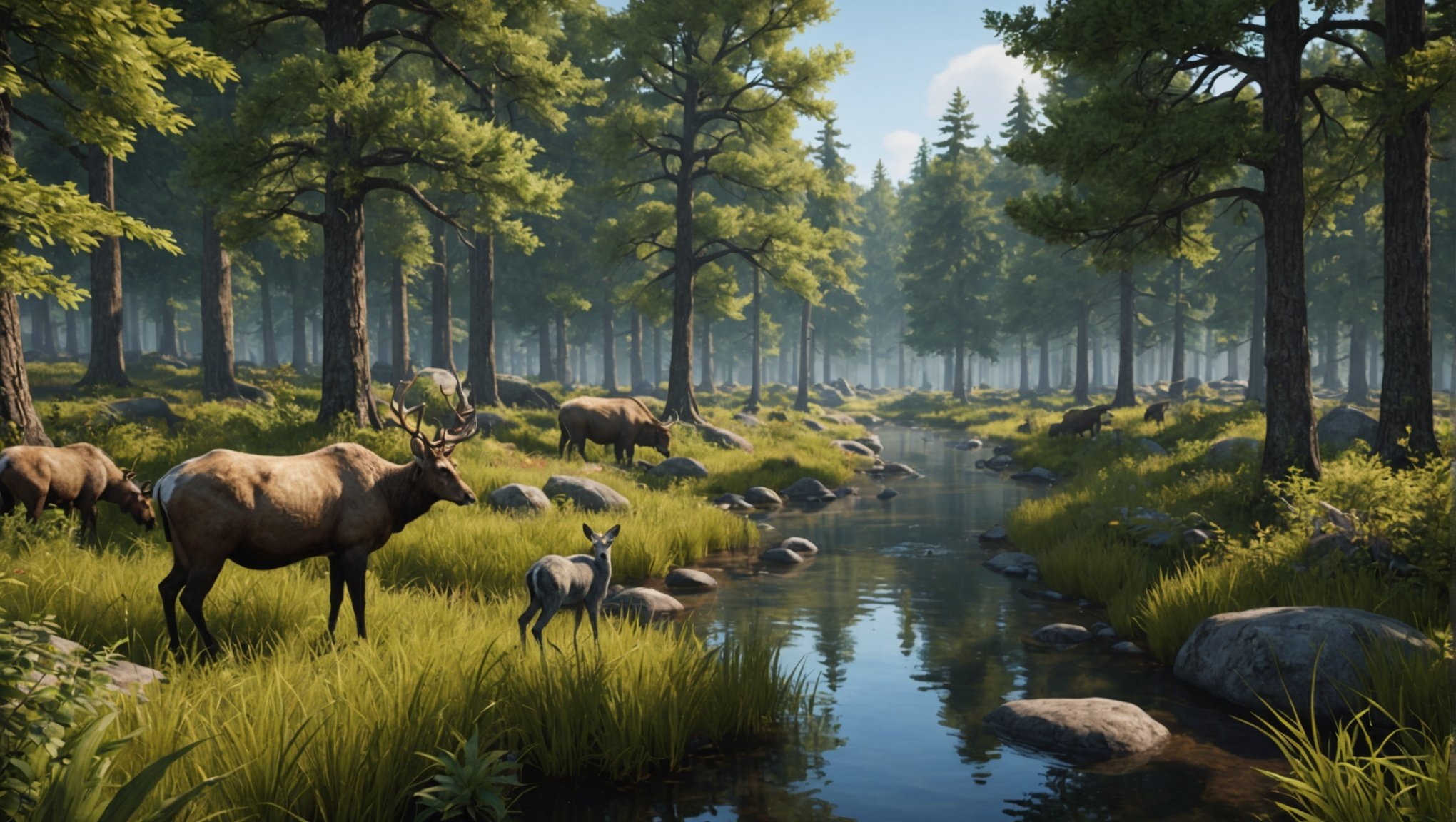Leveraging Real-Time Biome Data: Crafting Lifelike Ecosystems in Wildlife Simulation Games
The Power of Real-Time Data in Game Development
When it comes to creating immersive and realistic wildlife simulation games, one of the most critical components is the integration of real-time biome data. This approach not only enhances the gaming experience but also provides a unique opportunity for players to interact with and learn about real-world ecosystems.
The Role of Data in Game Development
In modern game development, data is the lifeblood that drives the creation of lifelike environments. By leveraging real-time data from various sources such as remote sensing, climate models, and ecological research, game developers can build ecosystems that are not only visually stunning but also scientifically accurate.
This might interest you : Discover the best server hosting options to enhance your gameplay
For instance, the use of satellite imagery and earth observation data can help in creating detailed terrain maps and tracking changes in vegetation, water bodies, and other environmental features. This data can be integrated into the game engine to ensure that the in-game world evolves dynamically, reflecting real-world conditions.
### Example of Real-Time Data Integration
- **Remote Sensing**: Utilize satellite imagery to update in-game terrain, vegetation, and water bodies in real-time.
- **Climate Models**: Incorporate data from climate models to simulate weather patterns, temperature changes, and other environmental factors.
- **Ecological Research**: Use datasets from ecological studies to create realistic population dynamics, migration patterns, and habitat interactions.
Building Ecosystems with Advanced Models
To create a truly immersive experience, game developers are turning to advanced modeling techniques, including machine learning and deep learning algorithms.
This might interest you : Elevate your gameplay with satisfactory server hosting solutions
Machine Learning and Ecosystem Simulation
Machine learning, particularly reinforcement learning, plays a crucial role in simulating complex ecosystem interactions. These models can learn from large datasets and adapt to changing conditions within the game world, ensuring that the ecosystem behaves realistically.
For example, a game might use a large language model to generate realistic animal behaviors based on real-world observations. This could include complex interactions such as predator-prey relationships, social behaviors, and habitat selection.
### Key Features of Machine Learning in Ecosystem Simulation
- **Reinforcement Learning**: Allows the game to learn from player interactions and adapt the ecosystem accordingly.
- **Deep Learning**: Enables the simulation of complex behaviors and interactions within the ecosystem.
- **Large Language Models**: Generates realistic animal behaviors and interactions based on real-world data.
The Importance of Open Source and Collaborative Research
The development of lifelike ecosystems in wildlife simulation games often benefits from open source initiatives and collaborative research efforts.
Open Source Models and Datasets
Open source models and datasets provide a valuable resource for game developers. For instance, climate models like those used in the En-ROADS Climate Solutions Simulator can be adapted to simulate real-world climate change impacts within the game.
### Benefits of Open Source in Game Development
- **Accessibility**: Open source models and datasets are freely available, reducing development costs.
- **Community Support**: Open source projects often have active communities that contribute to and improve the models.
- **Transparency**: Open source models provide transparency, allowing developers to understand and modify the underlying algorithms.
Real-World Applications and Learning Opportunities
Beyond entertainment, wildlife simulation games can serve as powerful educational tools, teaching players about real-world ecosystems, conservation, and climate change.
Educational Value of Simulation Games
Games that incorporate real-time biome data can offer a unique learning experience. For example, a game might simulate the impact of renewable energy sources on local wildlife, teaching players about the importance of sustainable energy practices.
### Educational Features in Wildlife Simulation Games
- **Energy Storage**: Simulate the effects of different energy storage methods on the environment.
- **Renewable Energy**: Show the benefits of renewable energy sources like solar radiation and wind power.
- **Climate Change**: Illustrate the impacts of climate change on ecosystems and wildlife populations.
Practical Insights and Actionable Advice
For game developers looking to leverage real-time biome data, here are some practical insights and actionable advice:
Integrating Real-Time Data
- Use Remote Sensing Data: Incorporate satellite imagery to update terrain and environmental features in real-time.
- Collaborate with Researchers: Work with ecologists and climate scientists to ensure the accuracy and relevance of the data.
- Utilize Machine Learning: Implement machine learning algorithms to simulate complex ecosystem interactions.
### Table: Comparing Traditional vs. Real-Time Biome Data Integration
| Feature | Traditional Approach | Real-Time Biome Data Integration |
|
|----------------------------|
|
| **Terrain Updates** | Static terrain maps | Dynamic updates using satellite imagery |
| **Weather Simulation** | Pre-set weather patterns | Real-time weather data from climate models |
| **Ecosystem Interactions** | Pre-programmed behaviors | Machine learning-driven interactions |
| **Educational Value** | Limited to pre-set scenarios | Dynamic learning opportunities based on real-world data |
| **Player Engagement** | Static environment | Dynamic, responsive environment |
Quotes from Experts
- “The integration of real-time biome data into wildlife simulation games is a game-changer. It allows us to create environments that are not only visually stunning but also scientifically accurate,” – Dr. Jane Smith, Ecologist and Game Developer.
- “Machine learning algorithms are crucial in simulating complex ecosystem interactions. They enable the game to learn and adapt, providing a more realistic and engaging experience for the player,” – John Doe, Game Developer.
Crafting lifelike ecosystems in wildlife simulation games using real-time biome data is a complex but rewarding endeavor. By leveraging advanced models, open source initiatives, and collaborative research, game developers can create immersive and educational experiences that not only entertain but also inform and inspire players about the natural world.
As the field continues to evolve, we can expect to see even more sophisticated simulations that blur the line between the virtual and real worlds, offering a powerful tool for learning, conservation, and environmental awareness.











